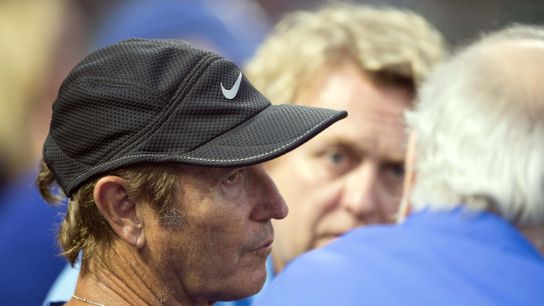Tempting as it may be to see it that way now, Art Briles did not wake up one morning determined to see his life's work crash down around him in a rain of Armageddon hell fire. The scandal that wrecked the lives of far too many innocent women, that stained his university and saw his career toppled like the statue of a fallen despot originated out of a serious of disastrous decisions that boiled down to one motivation: Briles wanted to protect his program.
On its face, the motivation was understandable. Briles rode his offense from the high school ranks to the Big 12, with a series of conference championships and multi-million dollar contracts following in their wake. Beyond that, Briles' program was family to him -- literally. Many of his assistants dated back to the Stephenville days. His son Kendal was his offensive coordinator. His son-in-law Jeff Lebby was his running backs coach. To protect himself was to protect his staff, to protect his family.
(And if you want to say Briles cared more about his program than his players' victims and their families, yes, his actions say that's absolutely true. His actions were unconscionable and indefensible. The attempt here is not to defend Briles, but explain him.)
So when an ugly sexual assault handle bubbled to the surface, Briles thought he could handle it in-house. The result could not have been a bigger disaster.
From the Pepper Hamilton report:
Football staff conducted their own untrained internal inquiries, outside of policy, which improperly discredited complainants and denied them the right to a fair, impartial and informed investigation, interim measures or processes promised under University policy. In some cases, internal steps gave the illusion of responsiveness to complainants but failed to provide a meaningful institutional response under Title IX. Further, because reports were not shared outside of athletics, the University missed critical opportunities to impose appropriate disciplinary action that would have removed offenders from campus and possibly precluded future acts of sexual violence against Baylor students. In some instances, the football program dismissed players for unspecified team violations and assisted them in transferring to other schools. As a result, some football coaches and staff abdicated responsibilities under Title IX and Clery; to student welfare; to the health and safety of complainants; and to Baylor’s institutional values.
Football coaches regularly say they wear a multitude of hats: father figure, psychologist, disciplinarian. Needless to say, "detective" and "judge" are not among them.
Coaches are qualified to adjudicate select acts of malfeasance: stolen cleats, missed curfews and the like. That does not include, and I can't believe I'm about to actually say this, sexual assault. They are simply not qualified. They're not even in the realm of qualified. And whenever the line between football crime and actual crime begins to blur, that very moment is the time to get an authority involved.
And, yes, it's easy to write this off as self-explanatory when reading it on a computer screen. But that-would-never-happen-to-me thinking is part of the reason Baylor allowed this virus to fester:
While individual administrators sought professional training opportunities, they were not adequately trained in the dynamics of sexual and gender-based harassment and violence, dating violence, domestic violence, stalking, the neurobiological impacts of trauma, the evaluation of credibility, consent and the role of alcohol as it relates to 8 consent and alcohol-facilitated sexual assault. In addition, the investigations were conducted in the context of a broader culture and belief by many administrators that sexual violence “doesn’t happen here.”
Briles thought his program would be best served keeping the rest of the university in the dark. Instead, the darkness spread -- everything always spreads, sooner or later -- and enveloped the entire university.
